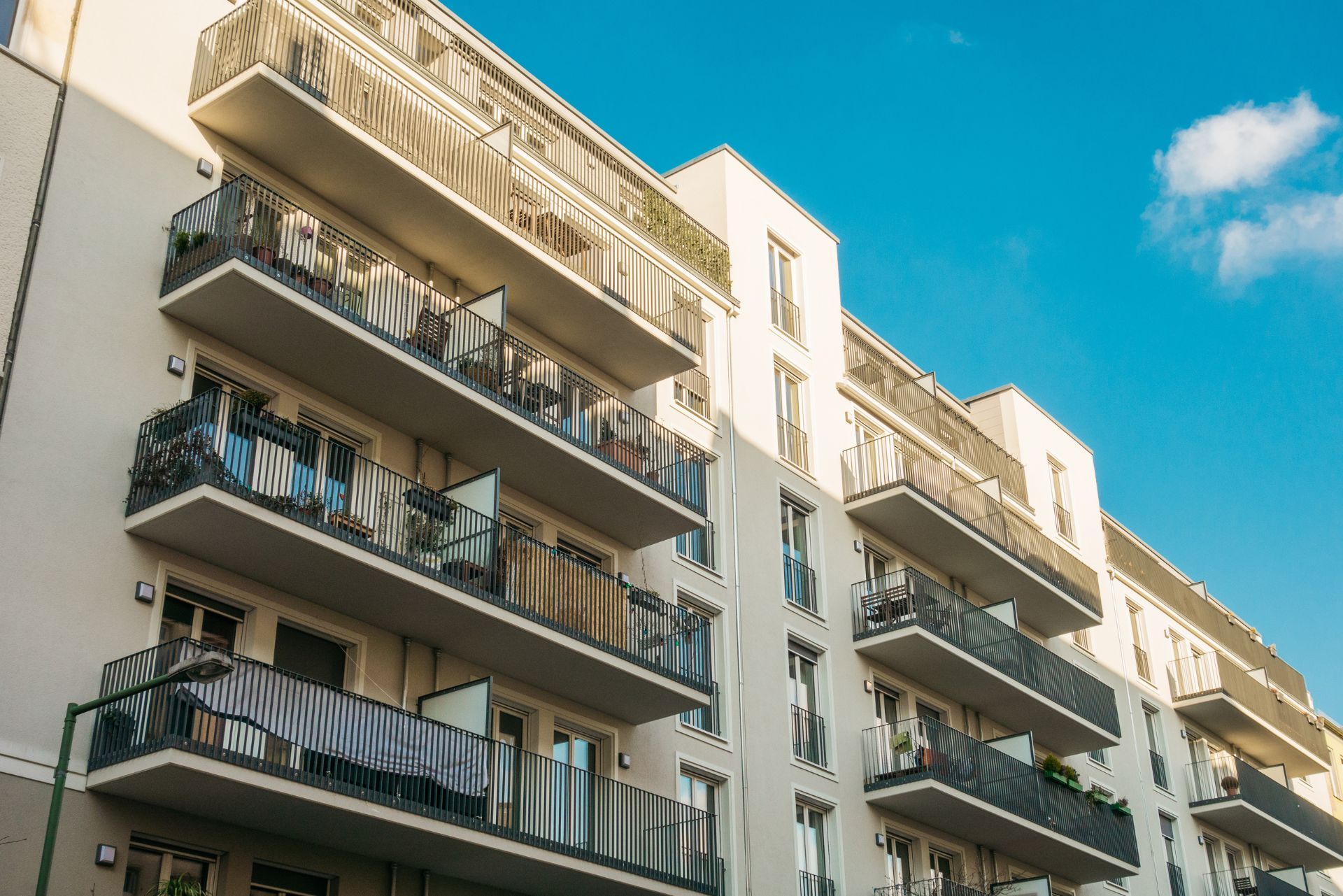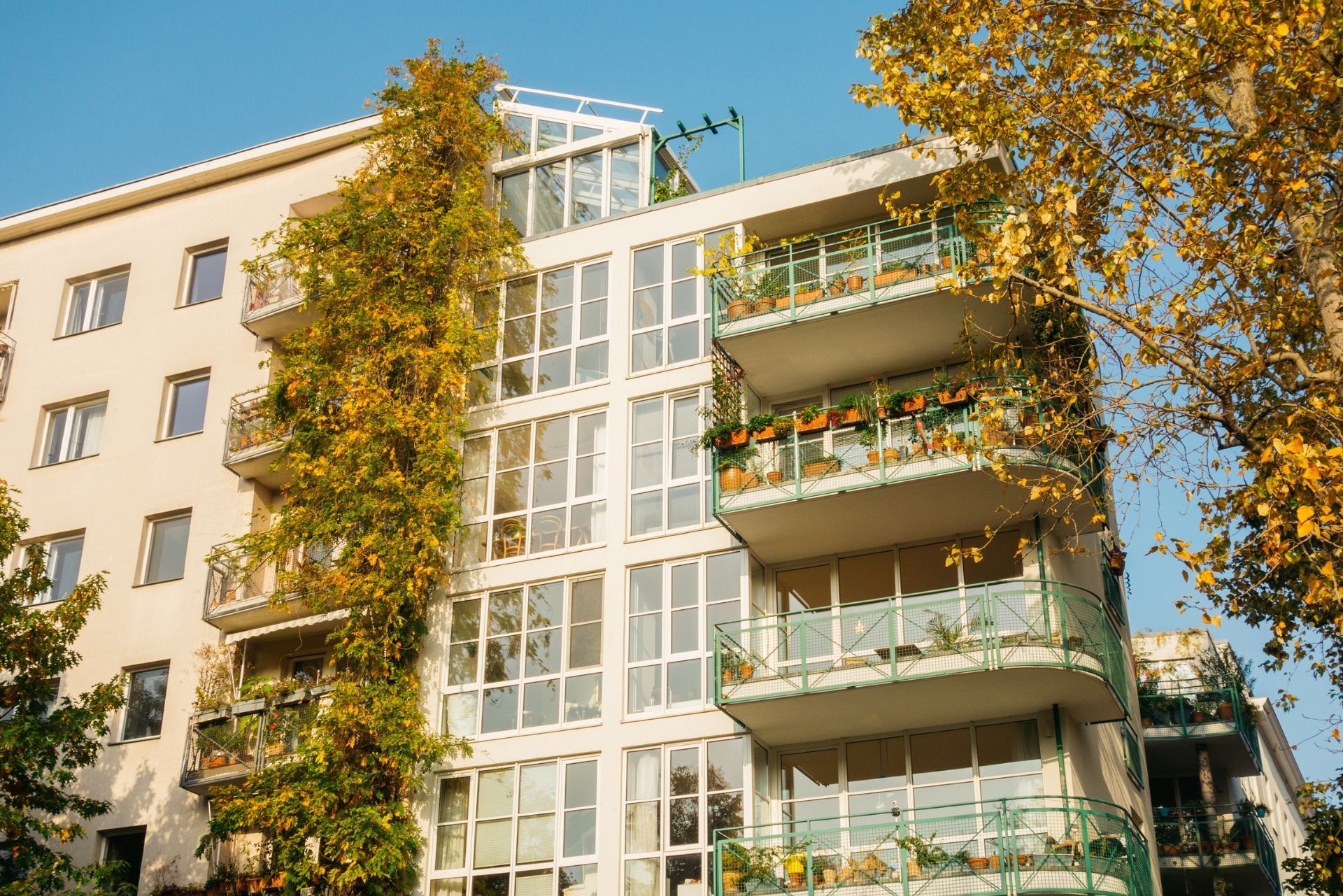Top 3 Recommended Policies

Investing in Class B multifamily apartments in South Carolina presents a unique blend of opportunities and challenges, particularly when it comes to insurance. As rental markets evolve and operational costs fluctuate, understanding the nuances of insurance coverage for these properties is crucial for owners, investors, and developers alike. This comprehensive guide explores the current landscape of multifamily apartment insurance in South Carolina, highlighting key trends, cost drivers, and strategic considerations to help stakeholders make informed decisions.
Recent data from the 2024 Q2 Multifamily Columbia Report by Colliers reveals that rents in the region have reached all-time highs, even as absorption rates have slowed. This dynamic underscores the importance of balancing revenue growth with rising expenses, particularly insurance costs, which have become a significant factor in property management and investment strategies.
The Rising Tide of Insurance Costs in Multifamily Housing
Insurance expenses for multifamily properties have been on an upward trajectory for several years, with recent reports indicating that these increases are not only persistent but accelerating in some markets. According to the CBRE analysis, insurance was the only component of total operating expenses whose annual growth rate continued to climb heading into 2024, albeit at a slightly slower pace than previous years.
This trend has tangible impacts on property values. Nationwide, multifamily property values have declined by approximately 3.6% since Q4 2019, largely attributed to escalating insurance costs. For Class B apartments in South Carolina, which often serve middle-income renters and operate with tighter margins than luxury properties, these cost pressures can be particularly acute.
Moreover, the volatility of insurance pricing—driven by factors such as increased claims, natural disasters, and underwriting challenges—adds a layer of unpredictability. The National Multifamily Housing Council highlights that owners, operators, and developers have been hit hard across all lines of insurance, including property, liability, and cyber coverage.
Why Are Insurance Costs Rising?
Several factors contribute to the surge in insurance premiums for multifamily properties. Natural disasters such as hurricanes and flooding, which are relevant risks in South Carolina, have led to increased claims and insurer caution. Additionally, rising construction costs and supply chain disruptions make rebuilding more expensive, prompting insurers to adjust rates accordingly.
Liability exposures have also expanded, with increased litigation risks and evolving regulatory requirements. Cyber insurance has emerged as a new necessity due to the growing prevalence of digital management systems and tenant data security concerns. These combined pressures create a challenging environment for multifamily property insurance.
Furthermore, the impact of climate change cannot be overlooked. As weather patterns become more unpredictable, insurers are forced to reassess risk models and pricing structures. Areas previously deemed low-risk may now face higher premiums due to the increased likelihood of severe weather events. This shift not only affects current property owners but also complicates the landscape for potential investors, who may be deterred by the rising costs associated with insuring multifamily units. Additionally, local governments are increasingly implementing stricter building codes and safety regulations in response to these environmental challenges, further driving up costs for developers and property managers alike.
In light of these developments, multifamily property owners are exploring various strategies to mitigate insurance costs. Some are investing in risk management practices, such as enhancing building resilience through improved materials and design, while others are engaging in more comprehensive tenant screening processes to reduce liability exposure. Additionally, the adoption of technology-driven solutions, like smart building systems that monitor and manage risks in real-time, is becoming more prevalent. These proactive measures not only help in controlling costs but also position properties favorably in a competitive market where insurance expenses are a critical consideration.

Impact on South Carolina’s Class B Multifamily Market
South Carolina’s multifamily market, especially in urban centers like Columbia and Greenville-Spartanburg, has experienced notable shifts influenced by insurance cost trends. The Colliers report on Greenville-Spartanburg details a slowdown in absorption rates and a slight dip in occupancy following the delivery of over 1,300 new units late in the year. This increase in supply, combined with rising insurance and operational costs, creates a more competitive and cost-sensitive market. Developers are now facing the dual challenge of managing these costs while also ensuring that their properties remain attractive to potential renters.
Conversely, the Columbia multifamily market continues to rally, with net absorption reaching a three-year high. This growth is fueled by strong in-migration, with a net 28 residents moving into the metropolitan area daily, as noted in the 2024 Q4 Columbia Multifamily Report. However, even in this thriving environment, the pressure from insurance costs remains a critical consideration for property owners and developers. As they navigate these financial pressures, many are exploring innovative solutions, such as incorporating energy-efficient designs and technologies that could lower operational costs in the long run, thus offsetting some of the burdens imposed by rising insurance premiums.
Affordable Housing Development Challenges
One of the most significant consequences of rising insurance premiums is their impact on affordable housing development. The Federal Reserve Bank of Minneapolis highlights that increasing insurance costs are influencing decisions about new affordable housing projects nationwide. For Class B multifamily properties, which often include affordable units, these cost increases can limit the feasibility of new developments or renovations, exacerbating housing shortages in growing South Carolina markets. Developers are increasingly finding it challenging to balance the need for affordable housing with the rising costs associated with insurance and construction, leading to a potential stagnation in new projects.
Moreover, the implications of these rising costs extend beyond just the developers; they also affect tenants. As property owners face higher insurance premiums, many may pass these costs onto renters through increased rents, making it even more difficult for low-income families to secure stable housing. The situation has prompted local governments and community organizations to seek out alternative funding sources and partnerships to support affordable housing initiatives, but the path forward remains fraught with challenges. Stakeholders are advocating for policy changes that could alleviate some of the financial burdens, such as tax incentives for developers who commit to maintaining affordable units, thereby fostering a more sustainable housing market in South Carolina.
Key Insurance Coverage Types for Class B Multifamily Apartments
Understanding the types of insurance coverage essential for Class B multifamily apartments is vital to managing risk effectively. While coverage needs can vary depending on property specifics, location, and ownership structure, several core insurance policies are typically necessary.
Property Insurance
Property insurance covers physical damage to buildings and contents caused by perils such as fire, windstorms, vandalism, and certain natural disasters. Given South Carolina’s susceptibility to hurricanes and flooding, securing adequate property insurance is critical. However, flood insurance often requires separate policies through the National Flood Insurance Program (NFIP) or private insurers, adding complexity and cost. Additionally, it is important to regularly assess the value of the property and its contents to ensure that coverage limits are sufficient. Regular appraisals and updates to the policy can prevent underinsurance, which can leave property owners vulnerable during claims processes.
Liability Insurance
Liability coverage protects property owners against claims arising from injuries or damages sustained by tenants or visitors on the premises. This includes slip-and-fall accidents, dog bites, and other incidents. Rising litigation risks have made liability insurance increasingly important and expensive, especially in densely populated multifamily settings. Furthermore, property owners should consider additional endorsements or umbrella policies that provide higher limits of coverage, as the costs associated with legal defense and settlements can quickly escalate. Implementing safety measures, such as proper lighting and regular maintenance, can also help mitigate risks and potentially lower insurance premiums.
Loss of Income Insurance
Also known as business interruption insurance, this coverage compensates owners for lost rental income if the property becomes uninhabitable due to a covered peril. For Class B apartments, which may have tighter cash flow margins, this protection can be essential to maintaining financial stability after a disaster. It’s prudent for owners to evaluate the potential duration of disruptions and ensure that their loss of income coverage reflects realistic recovery timelines. Additionally, some policies may offer extended coverage for additional expenses incurred during the recovery period, such as temporary relocation costs for tenants, which can further safeguard the property owner's financial interests.
Cyber Liability Insurance
As multifamily properties adopt more digital technologies for leasing, payments, and tenant communications, cyber liability insurance has become a necessary safeguard against data breaches and cyberattacks. This coverage helps mitigate costs related to data recovery, legal fees, and reputational damage. With the increasing sophistication of cyber threats, property owners must also invest in robust cybersecurity measures, such as encryption and
employee training, to protect sensitive tenant information. Moreover, having a comprehensive incident response plan in place can further enhance resilience against cyber incidents, ensuring that property owners are prepared to act swiftly and effectively in the event of a breach.
Strategies to Manage Insurance Costs Effectively
Given the rising and volatile nature of insurance premiums, property owners and managers must adopt proactive strategies to control costs without compromising coverage quality.
Invest in Risk Mitigation
Implementing safety and maintenance programs can reduce the likelihood of claims and improve insurability. For example, regular roof inspections, updated fire suppression systems, and enhanced security measures can lower risk profiles and potentially qualify properties for premium discounts. Additionally, investing in employee training programs focused on safety protocols can further minimize risks associated with workplace accidents and liabilities. By fostering a culture of safety, property owners not only protect their assets but also create a more secure environment for tenants and visitors.
Shop and Compare Policies
Insurance markets are competitive, and rates can vary significantly among carriers. Engaging with multiple insurers and brokers to compare coverage options and pricing is essential. Additionally, bundling policies or increasing deductibles may offer cost savings, though these choices should be balanced against potential out-of-pocket expenses. It's also beneficial to review policy terms regularly, as changes in property use or improvements can lead to better coverage options or discounts. Staying informed about market trends and emerging insurers can also provide opportunities for better rates and tailored coverage solutions.
Leverage Technology and Data
Advanced analytics and property management software can provide insurers with detailed risk data, supporting more accurate underwriting and potentially better rates. Demonstrating a commitment to technology-driven risk management can be a differentiator in negotiations. Furthermore, utilizing IoT devices for real-time monitoring of property conditions—such as moisture levels, temperature fluctuations, and security breaches—can help in identifying risks before they escalate into costly claims. This proactive approach not only enhances safety but also showcases a property owner's dedication to maintaining a well-managed asset.
Plan for Long-Term Cost Trends
Given that insurance costs have been rising steadily and are expected to remain a significant expense, incorporating these trends into financial models and investment analyses is critical. This foresight enables better budgeting and strategic planning, particularly for renovation and development projects. Additionally, understanding the broader economic factors that influence insurance rates, such as climate change and regulatory shifts, can help property owners anticipate changes and adapt their strategies accordingly. Engaging with industry experts and attending seminars can provide valuable insights into emerging trends and best practices, ensuring that property owners remain ahead of the curve in managing their insurance costs effectively.

Looking Ahead: The Future of Multifamily Insurance in South Carolina
The multifamily housing market in South Carolina is poised for continued growth, driven by strong in-migration and urban expansion. However, the insurance landscape presents ongoing challenges that require vigilance and adaptability.
Stakeholders must stay informed about regulatory changes, emerging risks, and market conditions. Collaboration with knowledgeable insurance brokers and risk management professionals will be key to navigating this complex environment. As the state continues to attract new residents, the demand for multifamily housing is expected to surge, leading to increased competition among property owners. This competitive landscape necessitates a thorough understanding of insurance options to ensure that properties are adequately protected while remaining financially viable.
As the Federal Reserve Bank of Minneapolis notes, the increasing cost of insurance is starting to impact decisions regarding new developments, particularly for affordable housing. Addressing these challenges proactively will help ensure the sustainability and profitability of Class B multifamily apartments across South Carolina. Moreover, the rise in natural disasters, such as hurricanes and flooding, has made it imperative for property owners to reassess their coverage and consider additional policies that may mitigate risks associated with climate change. This includes evaluating flood insurance options and understanding the nuances of state-specific regulations that could affect claims and coverage limits.
In summary, understanding the multifaceted nature of insurance for Class B multifamily apartments—from rising costs and coverage essentials to strategic cost management—is indispensable for anyone involved in this sector. By staying informed and prepared, property owners and investors can better protect their assets and capitalize on the opportunities within South Carolina’s dynamic multifamily market. Additionally, leveraging technology and data analytics can provide valuable insights into risk assessment and management, allowing stakeholders to make more informed decisions. As the market evolves, those who embrace innovation in their insurance strategies will likely find themselves at a significant advantage, positioning their properties for long-term success in an ever-changing landscape.
Contact Us


